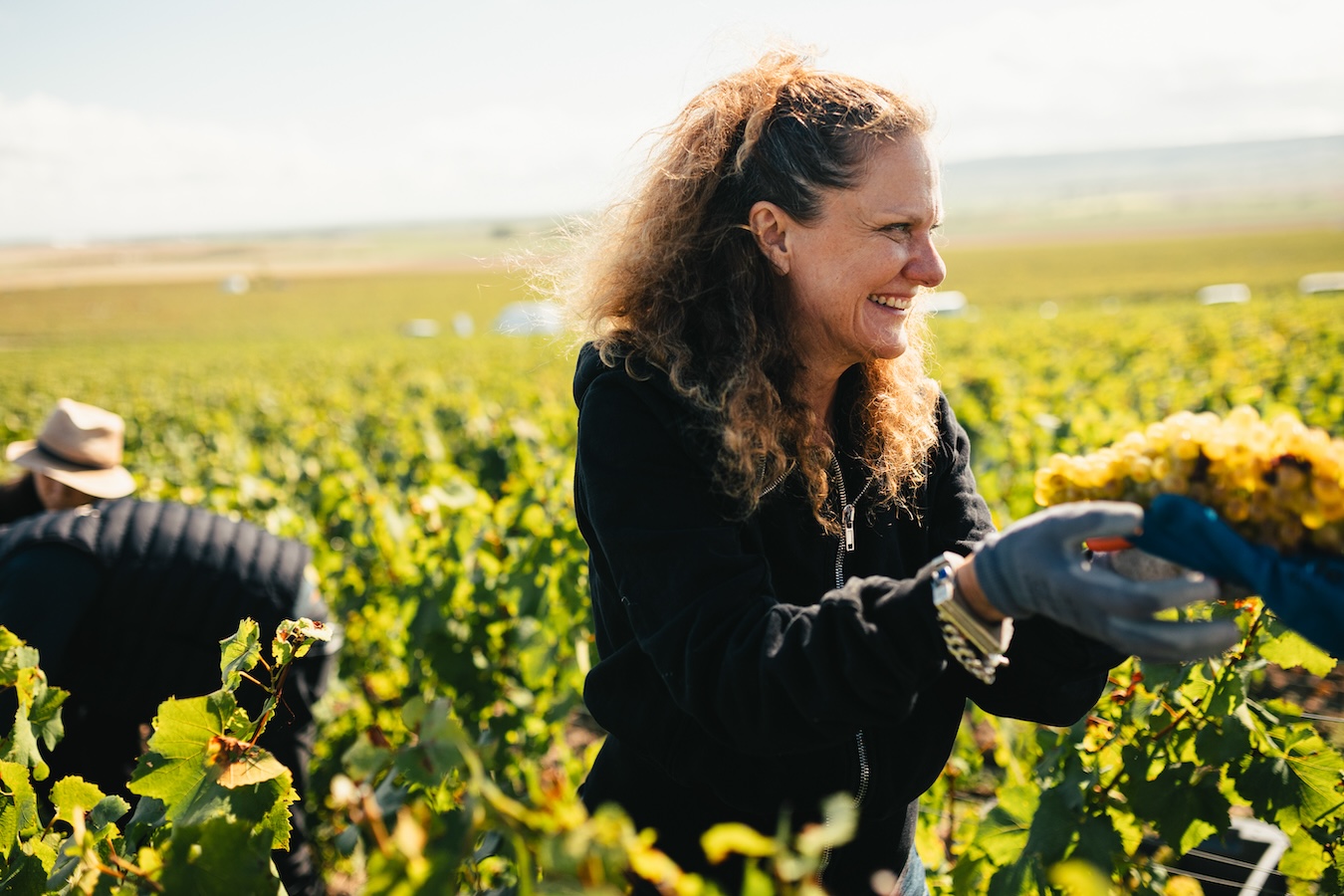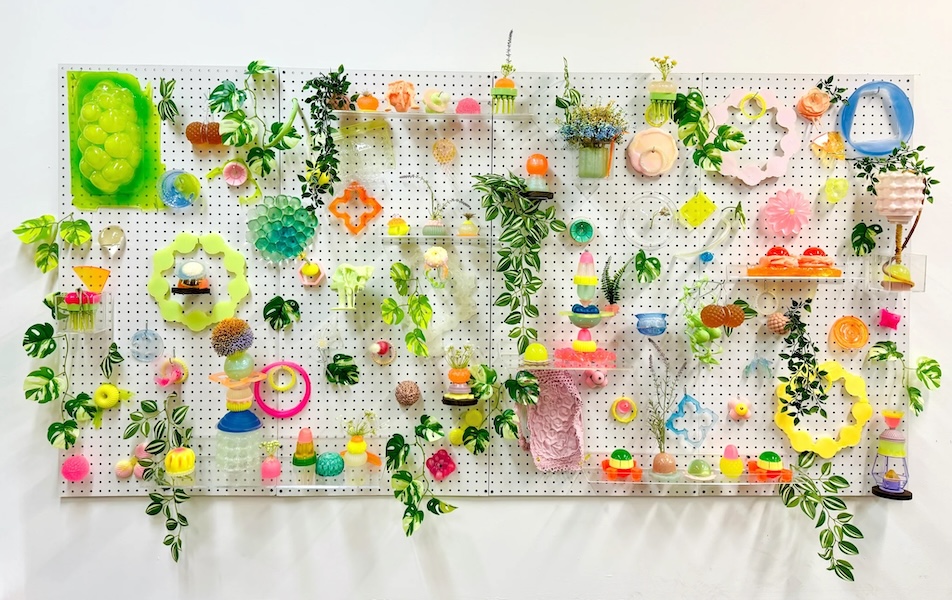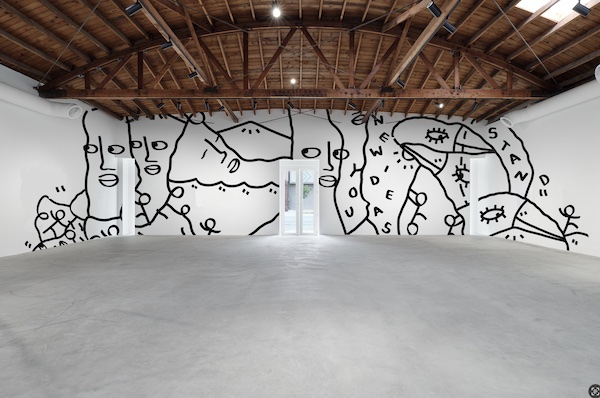This week at the fifth edition of Frieze Los Angeles, Maison Ruinart reveals a stirring collaboration with multidisciplinary artist and activist Andrea Bowers as part of the Carte Blanche 2024: “Conversations with Nature.” International visionaries including Henrique Oliveira, Pascale Marthine Tayou, Thijs Biersteke, and Marcus Coates were selected alongside Bowers to engage in dialogue with the world’s oldest champagne house—uplifting its commitment to Mother Earth’s survival.
A thoughtfully evolving, nearly 300-year history of the iconic, globally celebrated brand and its beloved vineyards in Reims, France provided fertile ground for Bowers’s unflinching artistry. A shimmering soulfulness emanates from each of her formidable endeavors, from laying her life on the line in a sweeping forest defense movement with activist John Quigley, to exhibiting flawless aesthetics in all mediums, to uniquely providing a platform within galleries and museums for fellow revolutionaries in the realms of immigration and humanitarian rights.
Ruinart Taps LA-based Artist Andrea Bowers for Carte Blanche 2024
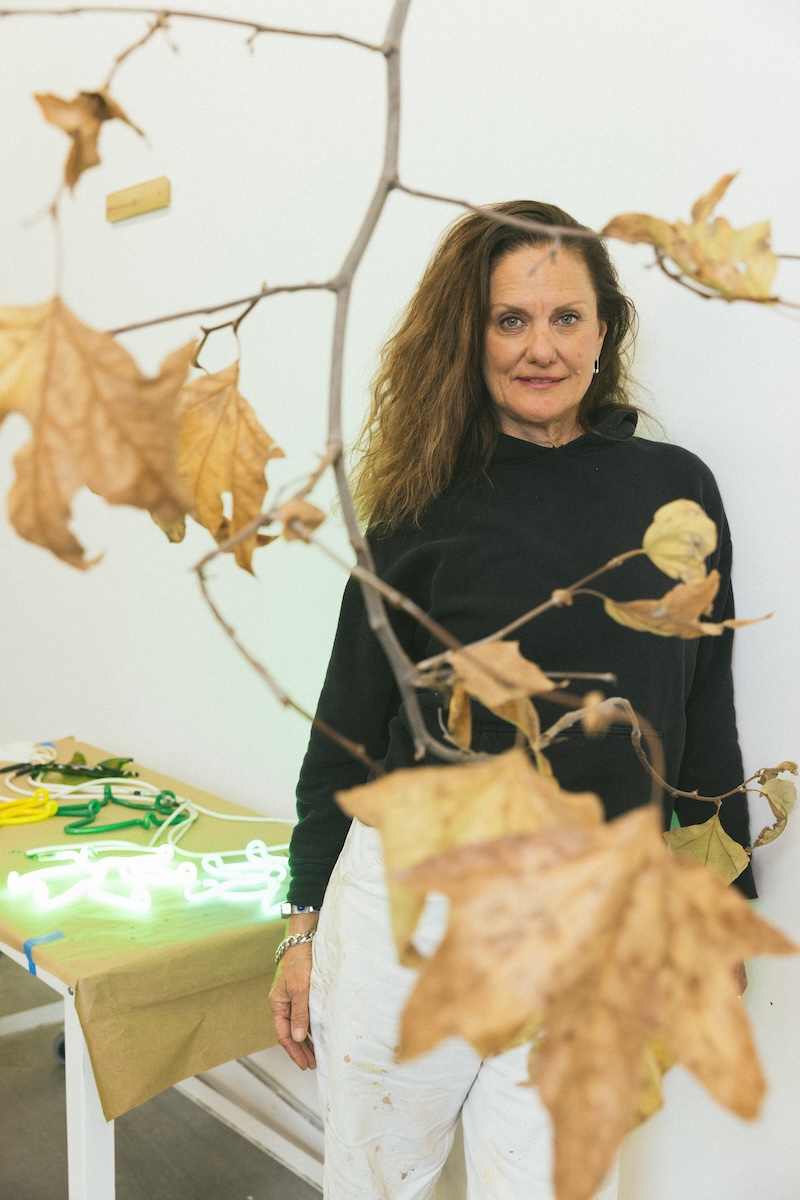
Portrait of Andrea Bowers, photo by Anais & Dax, courtesy of the artist and Ruinart.
Underway at the San Francisco International Airport is her project We’ve Got to Give Them Hope (2022), an homage to trailblazing politician Harvey Milk. The work speaks in an evocative language of neon marquees and mirrored globes to illuminate the city’s iconic Castro Theatre, an enduring beacon of hope for the LGBTQ+ community.
Recently, Whitewall was invited to Bowers’s studio in Los Angeles. She was in the process of developing Carte Blanche 2024 iterations of ongoing works Political Ribbons and Chandeliers of Interconnectedness—the latter of which will beguile by way of prismatic glass and neon in the Ruinart’s charming Artists’ Garden in Reims.
While visiting, we had the opportunity to speak with the artist about generational environmentalism, feminist empowerment, and protecting the planet through Ruinart champagne.
WHITEWALL: As an artist with a visceral understanding of the fragility and poetry of nature, what were some of your primary influences in the realms of art and environmental activism?
ANDREA BOWERS: I grew up on Lake Erie near Cleveland. My dad was a high school teacher. We had very little money, so he became a charter captain to take people fishing. He was obsessed with making sure nature was protected and was very sad about the development, the loss of some of the swamplands, and the forests.
Every summer, early in the morning, I was out on the boat with him. He would fish, or we would catch minnows, or just be out together. When I was growing up, because we were three houses away from the lake, every day my mother would check the paper and the news to see if I could go swimming because of the pollution. The Cuyahoga River in Cleveland caught on fire because of the pollution that was dumped into it. It really got to me.
We ate everything my father caught and he was very careful—only what you’re allowed. But we really lived off the land in a lot of ways. When you live off the land, you have to protect the land. Now, my younger brother is an environmental scientist on the Cuyahoga in Toledo. I think my dad and mother’s love of the natural environment and concern for it is just in our family.
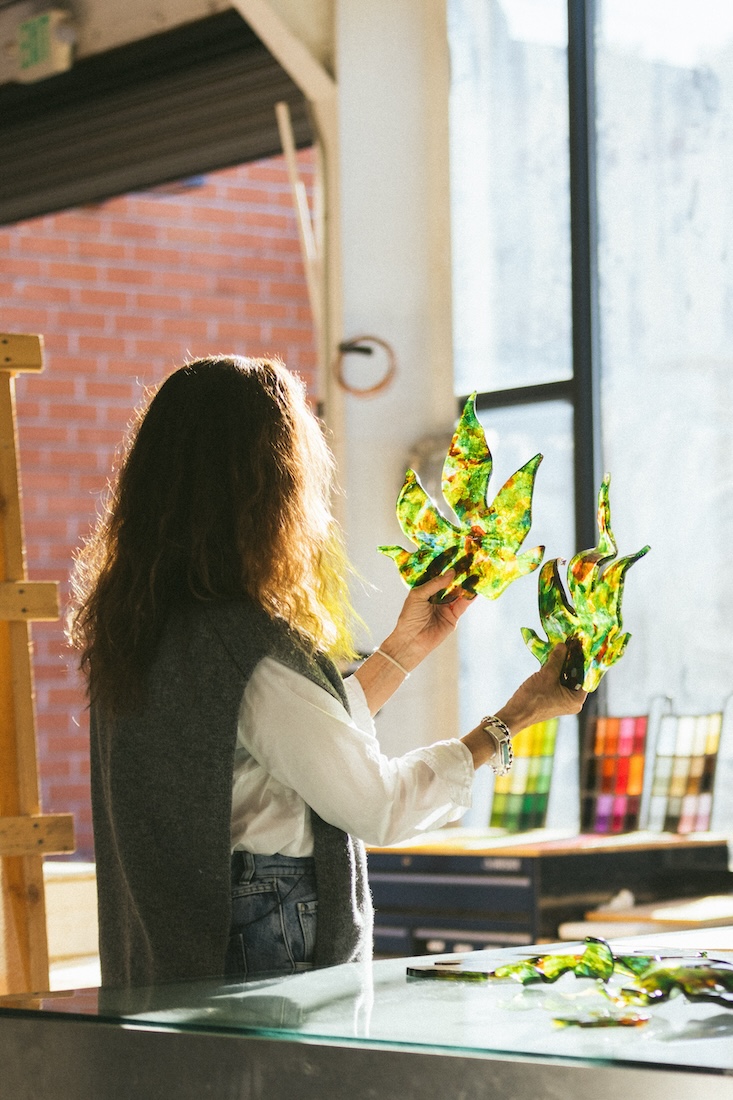
Photo by Anais & Dax, courtesy of the artist and Ruinart.
When you’re so affected by nature you see it as a person, or a relative, not just a resource to be used. It’s just one of the subjects I’ve been making work about my whole life, over and over again, in different ways.
Things can’t change with just individuals. It takes the power of big businesses and corporations to commit to something like this. I think Ruinart’s commitment is huge because some of their policies could affect the grapes or the taste of all of them, but that they’re trying this, and they’re doing it, is amazing. I’m just happy to be part of that.
Andrea Bowers in Conversation with Nature
WW: How did your journey with Maison Ruinart’s 2024 Carte Blanche “Conversations with Nature” begin?
AB: Fabian [Vallérian], Arts & Culture Director at Ruinart] came to my old studio and just started talking to me. He had seen my work, researched me, and asked if I would like to do something. I had been in Paris for six months a few years before and it’s my favorite champagne. It was joyful, I didn’t have to think twice.
Then I was able to visit and see the amazing work that’s going on with experimentation, science, and biodiversity of the landscape around the vines. We don’t want to be drinking chemicals. We’d like ladybugs to take care of that for us. It’s a risk and I think it’s awesome. That’s just one small thing that they’re doing, but it’s exciting to me.
WW: How are you energized as both an artist and an activist by the nearly 300-year bond that the oldest champagne house has cultivated with the land—and its commitment to biodiversity?
AB: I was given a lot of research on the powerful women who have been behind the business. It was exciting to see that there is a feminine and feminist empowerment that has been in the culture of Ruinart. They have two women who are wine growers, planting and raising the grapes—young, well-educated, very passionate about changing the way the wine is grown, so that it’s totally biodiverse, really thinking about protecting the climate, and changing the whole area where champagne comes from.
To create such a large-scale model, with things like ladybugs, birds of prey, experimenting with temperature, placement, and how the grapes are trimmed and grown, it’s simple things that are just going back to nature.
They’re working with schools and scientists, doing complex analysis of the data they’re discovering. There’s serious science happening in the field as well. I think the statistics and information that’s being collected could possibly really change the way wines are grown in the future.
My mom lived in San Luis Obispo County and my stepfather still lives there. There’s no way to know, but my mom got brain cancer while living behind a vineyard that was sprayed. The fact that Ruinart is doing this can change lives. It’s important to me to support them because of that.
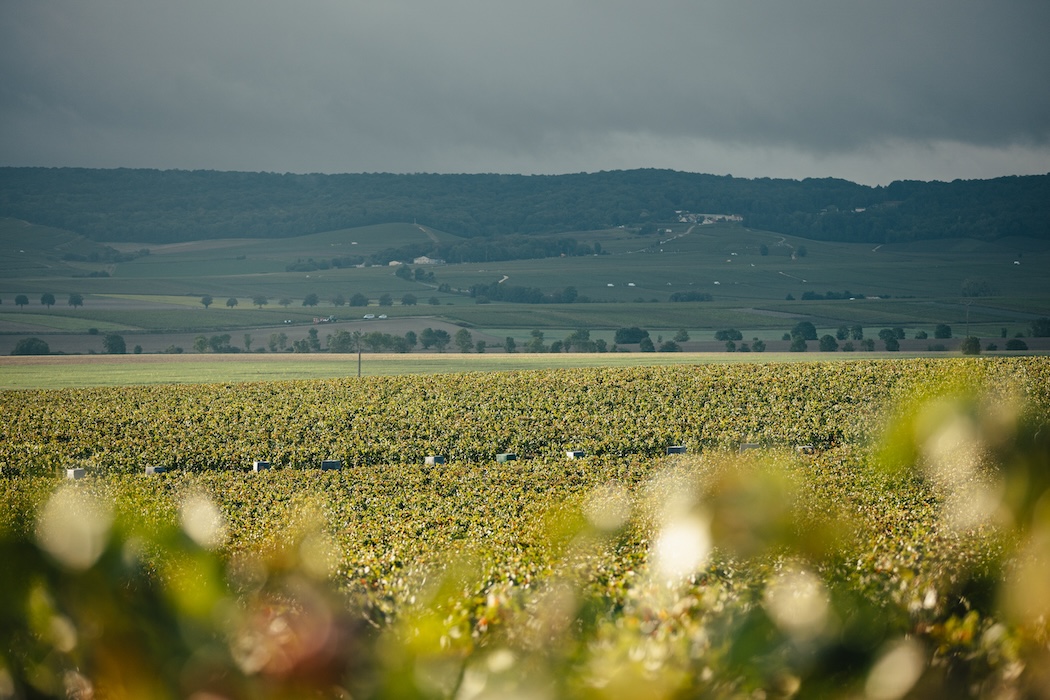
Photo by Mathieu Bonnevie, courtesy of Ruinart.
WW: During your visit to the Maison’s historic site and vineyards in Reims, France, what elements sparked your emotions and creativity?
AB: It’s that. When they bought the house it was a neighborhood that had horses and cow pastures behind it. Over time the cow pastures became vineyards. Some of them were spraying all the time. My mom was behind this neighborhood movement—have everything tested all the time. Then several people came down with cancer. There’s no way to prove it, who knows? But Ruinart is trying. Of course, it takes years, it doesn’t happen overnight. To be able to support that, that’s what I’m passionate about, that’s what moves me.
The passion of those young women, the growers, to be so committed, and at risk, because Ruinart is not a small scale, it’s an important wine. They’re experimenting with those grapes, which are so rare and special, and their courage and passion to do it was really inspiring.
WW: What was your process, balancing the development of multi-faceted works Chandeliers of Interconnectedness and Political Ribbons? What kind of timeline was in place?
AB: I pretty much knew immediately what I wanted to do, and Fabian really wanted the ribbons. It was just pulling it together. They have a champagne tasting room in each of the Frieze art fairs, so getting it done for the first one, which is at the end of February, was kind of the timeline. The last time that I visited, when we were there for the harvest, I feel like that’s when I really learned so much, and it kind of brought it all together for me. Creativity takes a little while, you have to think of things, and then you figure out how to produce them.
I met the other artists, which was really nice, and heard about their projects, and developed some friendships. Meeting a lot of the people who worked there and the artists was important and cleared my thinking about the project.
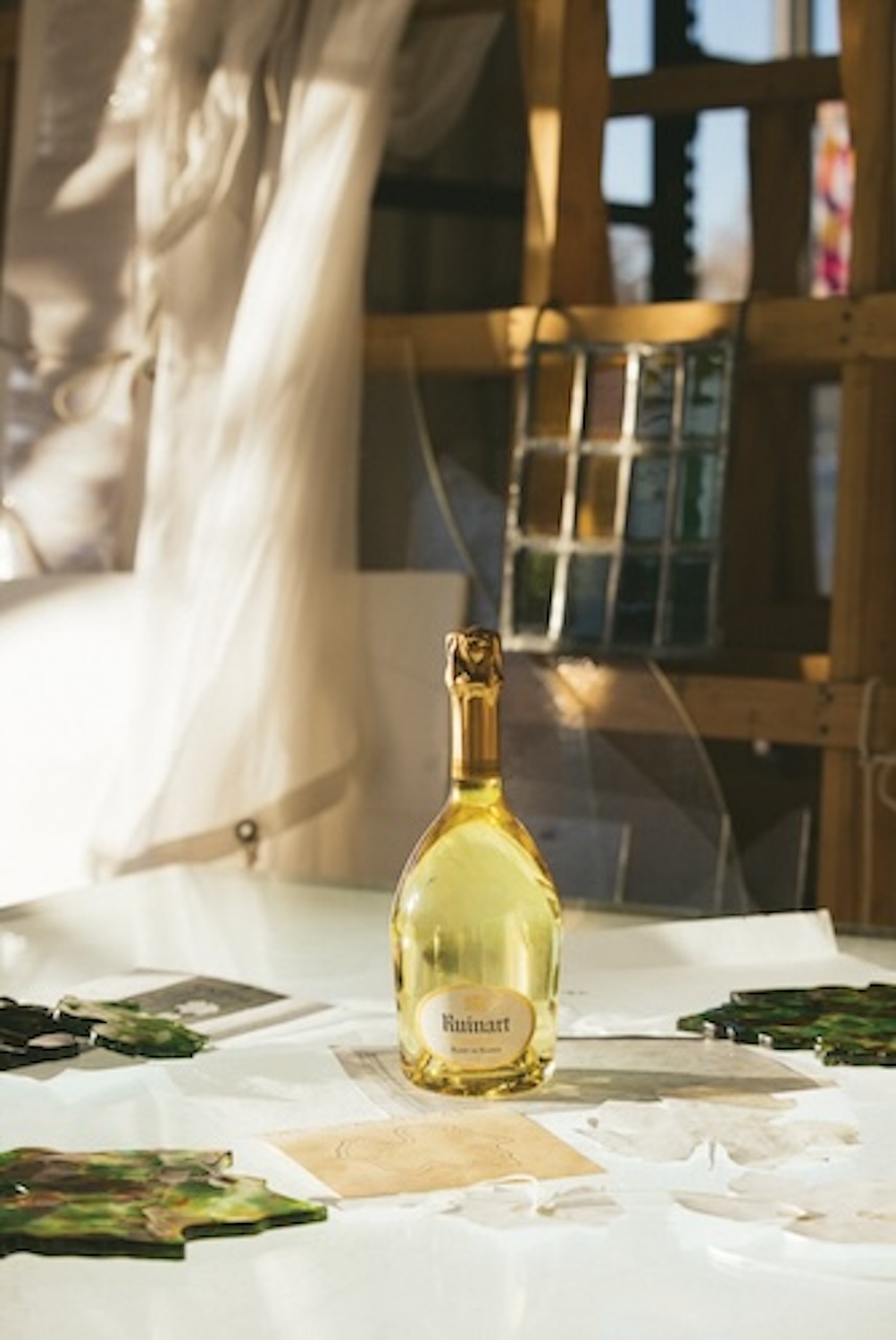
Photo by Anais & Dax, courtesy of the artist and Ruinart.
“I can’t say that I’m making change, but I can be a part of a group of people who are trying to make change,” — Andrea Bowers
WW: How did your collaborations with Judson Glass and Lite Brite Neon ebb and flow throughout this process?
AB: Lite Brite I’ve been working with for years. I was in a show at the Jewish Museum, the first time I showed the ribbons years ago, and the museum had put the title of the show in neon. I walked up to it and I was like, this is how I want my neon’s made. It was so exquisite, and you could really tell the difference in quality. I found out who made them, that it was Lite Brite, and Matt [Dilling] is such a magical, special person. They are really trying to create trans and queer models of running a sustainable business that protects their workers. I love supporting them. That’s an ongoing, probably lifetime relationship.
I have known about Judson just walking around because I hike a lot in my neighborhood. For years I’ve been stalking that old Judson building, like on a monthly basis, hoping to get a studio in there. I moved into my house in 1993 and I was one block away. I’ve known about them since then. During COVID I was going to try to take classes with them, or Bullseye which they’re connected to, and I didn’t get around to it because I got really busy doing other things. I wanted the neon chandelier series to evolve. Finally, I ran over there really fast and begged them to make them when they didn’t have any time to do it—and they did.
I want to do a bigger project with them. I have to come up with it. But it’s been really good to do these smaller glass pieces and start to have them evolve into different things before I do something big. I’m trying to learn their skill set because it’s so unique, it’s the only glass foundry in the world that does the particular things that they do. It’s been five generations, and they make all the beautiful glass in my neighborhood that I see on a daily basis. I love working with local activists and local craftspeople—it’s part of my practice. And I love glass. It’s such a beautiful medium.
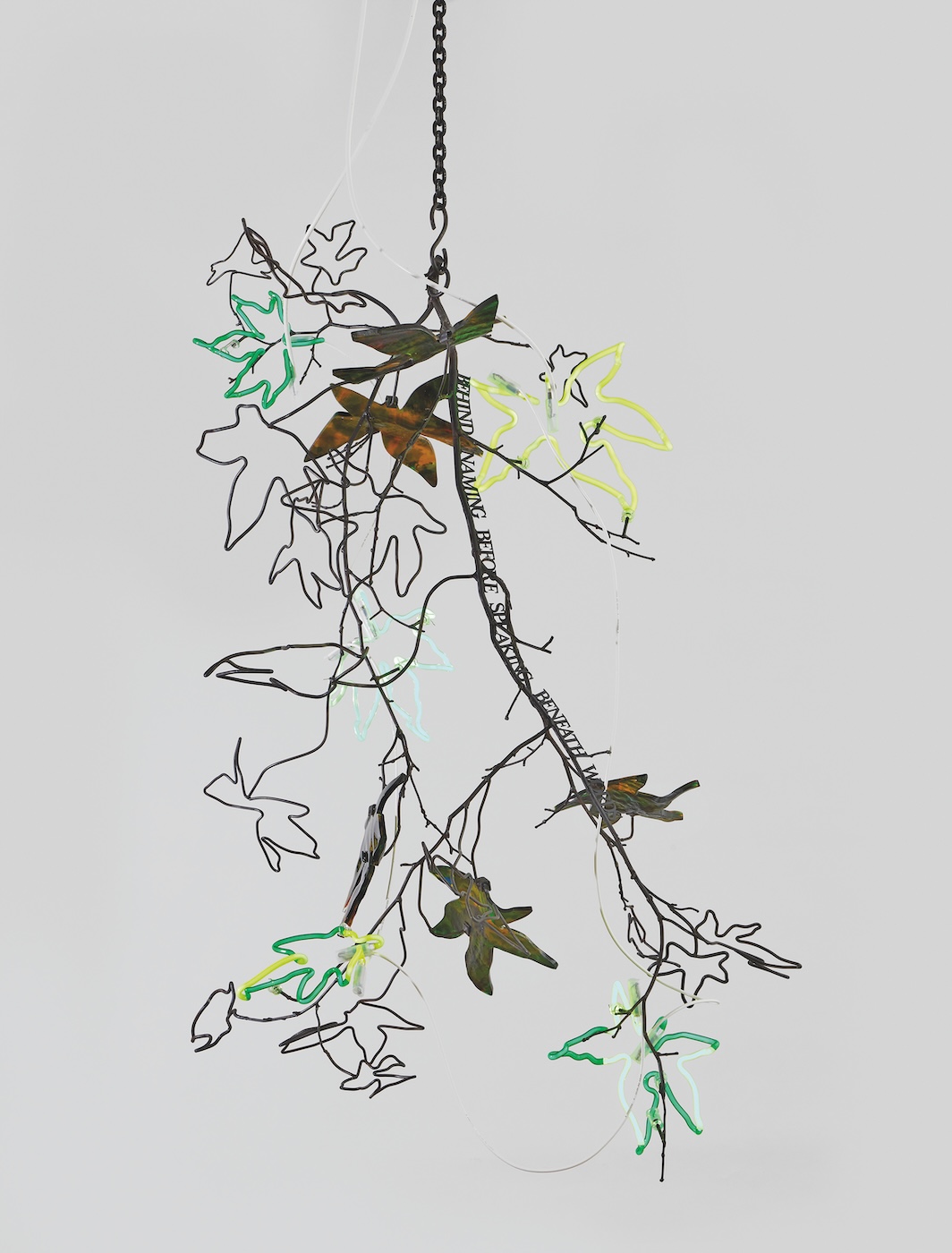
Andrea Bowers, “Chandeliers of Interconnectedness,” Behind Naming Before Speaking Beneath Words, Quote by Susan Griffin, 2023; photo by DR, courtesy of the artist and Ruinart.
WW: Can you speak to the significance of materials in your works? How is the steel, glass, and neon of Chandeliers—as well as the silk-screened slogans of Political Ribbons—both a reflection and a call to action?
AB: I always pick a subject first because I was trained as a conceptual artist where the idea has to be primary. I always think that subjects that I work with have built-in aesthetics; there are colors and there are materials. Even Ruinart has beautiful glass bottles, colors in the champagne, leaves, vineyards, there’s all this green, and there are landscapes. They even have fonts. I chose another font for another conceptual reason, but I always take these things into consideration.
The other thing is that I am hoping that my work makes people think. I can’t say that I’m making change, but I can be a part of a group of people who are trying to make change. I can provide the aesthetics and the beauty behind a movement. A lot of what I do is document movements and make political signage.
Neon is a great thing to use because it’s really beautiful. Colored lights are an anesthetic vernacular. I try to visualize the movements, ideas, and aestheticize them so that people will be drawn towards them. If artists weren’t involved in Act Up, and did all those amazing campaigns and posters, I’m not sure the AIDS crisis would have been as affected if all those amazing artists weren’t involved in New York.
I think that’s my job, I’m like the arts committee. It’s common notions of beauty at the time of making them because I think it’s ever-changing.
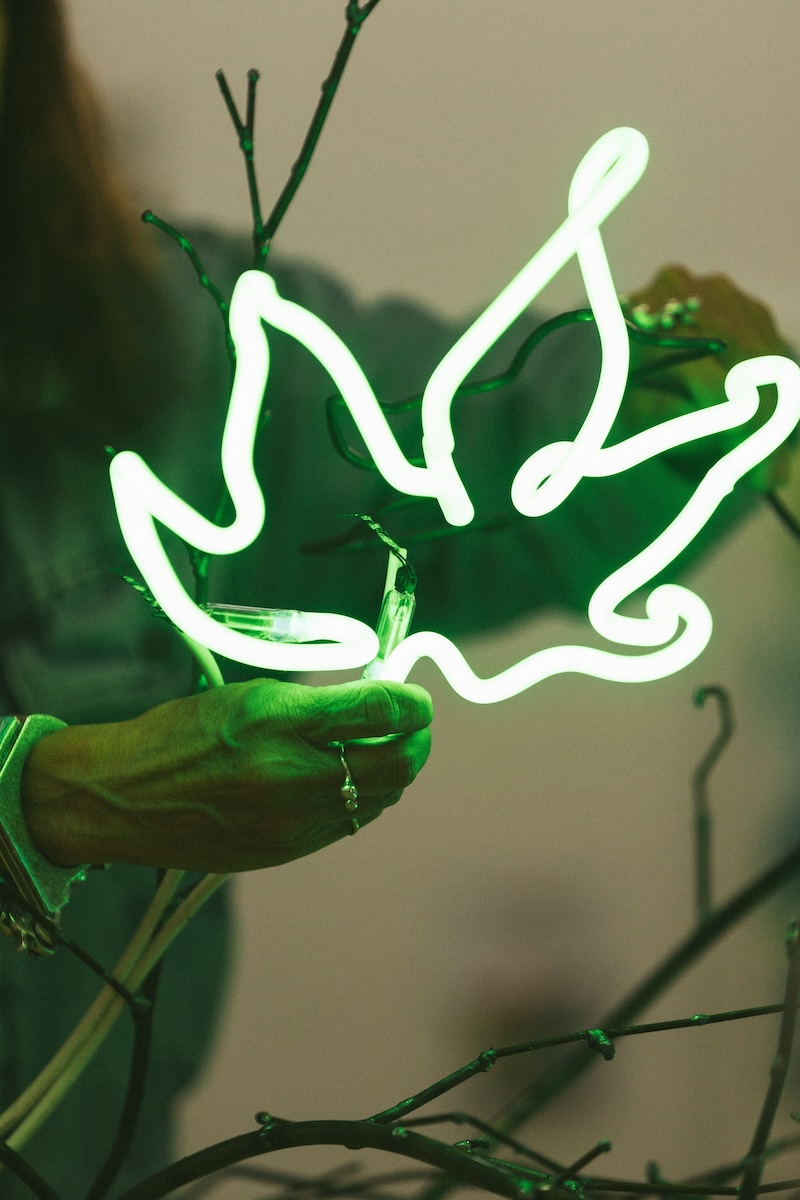
Photo by Anais & Dax, courtesy of the artist and Ruinart.
Visiting Ruinart’s Artists’ Garden in Reims, France
WW: Within the Artists’ Garden in Reims, how do you expect visitors will react to the dynamic tones, textures, and shapes of your works?
AB: I have a chandelier in my backyard hanging from a tree. I always love seeing chandeliers in trees. Mine is not fancy, it was an open box that I bought. I just think it’s a beautiful thing to light up trees and to have this ecofeminist quote. It’s some sense of romantic relaxation, celebration, and people eating. I have a table under my chandelier. It’s a beautiful thing at night under trees.
That’s why I thought about it, because they have a group of trees there, and you’ll be able to see it from the café, and you’ll be able to walk by it and see it from the main building. I love the romance of a chandelier in a tree.
WW: The chandelier will spotlight a quote from French ecofeminist François d’Eaubonne, how does this detail reflect your ardent values?
AB: Each one has a different quote, but all of those ideas apply to ecofeminism. I love that a French woman created the concept of ecofeminism and coined the term and the movement. It seems crazy for me not to reference her in the chandeliers since it’s going to be in France.
I’m still deciding, I’m reading the book, it’s just been translated to English. I’m 1/4 to halfway through it, and I have a lot of notes already on things I love. It’s not going to be a problem. I think the thing that takes me the longest is actually figuring out what I want to put in it, per the language. Hers is more theoretical, but it’s still poetic.
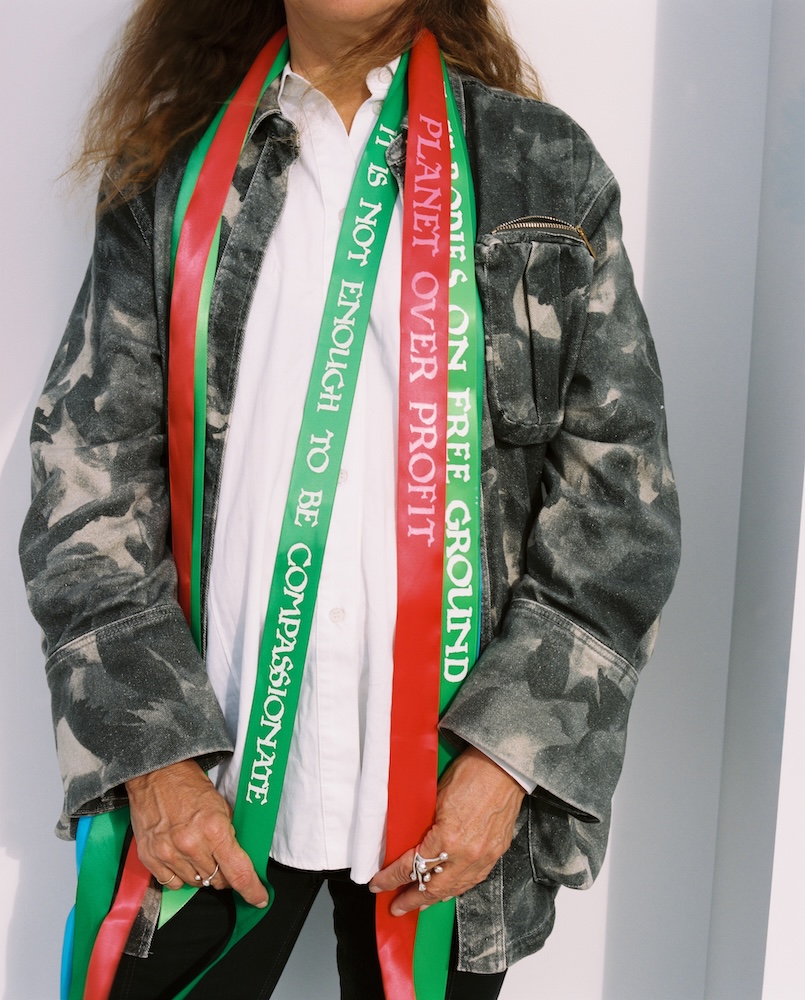
Photo by Marion Berrin, courtesy of the artist and Ruinart.
WW: In their idyllic garden setting, how are your works in an intimate dialogue with the creations of fellow artists, as well as with the esteemed Maison, and Mother Nature herself?
AB: The six of us all deal with environmental issues. It’s like a beautiful curated show. We all have similar concerns and we do it in really different ways. You’ll see all these different approaches to different conversations with nature through the artworks. Some people are less political than others and in so many different mediums that highlight once again protecting the planet, and that we have to deal with climate change—this climate emergency that we’re in.
Putting us all together will be a stronger voice. People will recognize that the oldest champagne company in the world is willing to commit to this idea which is really important. As an individual, I can recycle, I can be really careful, I can do everything I can, but to have a major corporation commit to something like this is a pretty big thing. It’s a model for other corporations and we need it at that scale for change to really occur. It’s a visual way to reveal that you’re not just there to drink champagne, you’re also there to think about protecting the planet.



